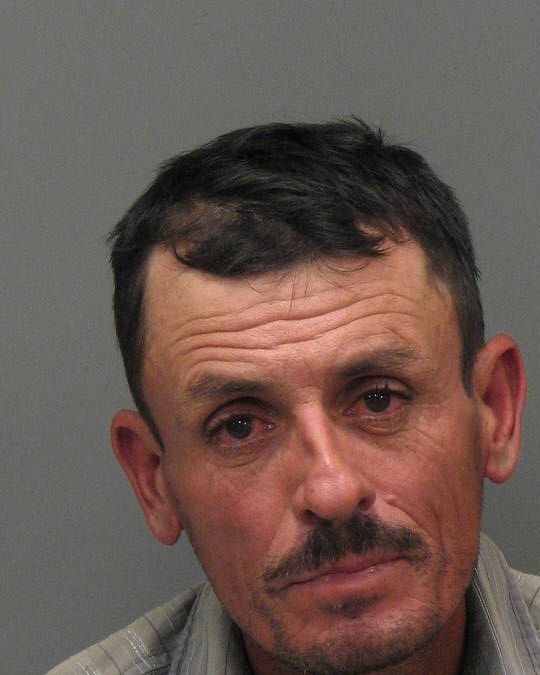While some local residents believe the county has made changes to zoning ordinances to pave the way for an Islamic mosque project, others in San Martin feel like their voices are not being heard on a number of key issues they fear could lead to urban sprawl in the rural community.
Trina Hineser, President of the San Martin Neighborhood Alliance, is in the latter group and has organized an Oct. 21 town hall meeting to discuss multiple topics with Santa Clara County officials, including Supervisor Mike Wasserman. She stressed it is not about any one project proposal or one particular issue but instead of a number of growing concerns about San Martin.
This Friday’s town hall session is scheduled to begin at 7 p.m. at The Lion’s Club, located at 12415 Murphy Ave. in San Martin.
In an Oct. 17 email addressed to local media outlets, Hineser wrote that the meeting “is being held due to numerous issues San Martin has been faced with”—including recent changes to the county’s “local serving” land use guidelines.
County officials explained these specific amendments to the local serving aspect of the General Plan were made to clear up language that was perceived as “illegal” and “unconstitutional” by general counsel. Furthermore, the ordinances are county-wide and not specific to San Martin.
“We want to engage the community. But at the end of day Supervisor Wasserman has to do what’s in the best interest of District 1 and the entire county,” Wasserman’s Land Policy Aide Roland Velasco said.
Velasco will join Wasserman, who represents District 1 (which includes San Martin) on the county’s governing body; District 1 Planning Commissioner Marc Rauser; and County Planning Manager Rob Eastwood at the Oct. 21 meeting to answer questions.
The local serving policy amendments were approved by the county’s Board of Supervisors in October 2015. Some vocal residents were not in favor of those changes—expressing their concern with allowing large projects in their small, rural hamlet.
“We’ve had so many issues in our little community and we are just trying to defend ourselves,” said 22-year San Martin resident Steve Bisordi, who is concerned about the proposed mosque project as well as a proposal for a 124-lot motorhome project on land at the corner of Monterey Road and California Avenue. Bisordi cited traffic, infrastructure and water shortage concerns.
Previously, any new project in San Martin had to serve the community in some way. However, that language, which was altered in the updated ordinances, violated the federal Religious Land Use and Institutionalized Persons Act of 2000, according to county staff. The legislation was written to “protect individuals, houses of worship, and other religious institutions from discrimination in zoning and landmarking laws,” according to the U.S. Department of Justice.
Velasco confirmed that several references for “local serving” uses in the General Plan and Zoning Ordinance were revised to be consistent with a review process that focuses on the size, scale and intensity of the use, instead of the origin of customers.
Sprawl coming to San Martin?
Other issues to be discussed at the Oct. 21 meeting, according to Hineser, include changes to “Secondary Dwellings” ordinances “when San Martin is inundated with illegal housing structures;” the San Martin Planning Advisory Committee’s power since their recommendations “are repeatedly overturned and subsequently approved by the planning commission;” water quality and resources; and the High Speed Rail project’s impact in San Martin.
Nearly 500 San Martin residents signed a petition that opposed any changes in wording to the local serving ordinances, according to community activist Georgine Codiga-Scott. That petition was submitted to the Board of Supervisors earlier this month.
“All these ordinances were changed for this one project,” Codiga-Scott said. “The codes were meant to protect the rural environmental setting of the community and they have been enforced for three decades to keep the larger projects out of San Martin.”
Velasco said the old verbiage left too much interpretation on behalf of the planning commission. The new wording specifically details that officials must take into account the size, use and impact of the project to the local community.
“Now, hopefully, the planning commission and the Board of Supervisors will have something tangible that they will look at and use as a gauge to whether a project is suitable for a particular area,” Velasco added.
The proposed Islamic mosque is a large project that has caused the biggest stir among San Martin residents. Known as the Cordoba Center, it is proposed by the Silicon Valley Islamic Community, which consists of about 100 Muslim families in South County. The project includes an 8,938 square foot mosque, a 14,548 square foot community building, a maintenance structure and caretaker’s dwelling, according to the developer’s plans.
Proposed outdoor facilities include a cemetery, playfield/playground and a campground for youth summer camps, according to the plans. The developer will plant a small orchard on the Monterey Road frontage, between the structures and the roadway, and add vegetation to the property’s southern border in order to help the project blend in with its natural surroundings.
The expected maximum occupancy of the site will be 300 people, who will attend afternoon religious services once a week, on Fridays, the plans state. Up to four times per year, occupancy could exceed 300 people for the Eid holiday and weekend community events.
The mosque plan is an institutional use proposed in the rural areas and subject to the county’s local-serving provisions (Section 2.20.090 of the Zoning Ordinance), according to Velasco. The application for the Cordoba project is complete and ready for review. County staff is expected to begin the environmental review process and, under the local-serving provisions, they will further evaluate the project’s impacts to rural resources, such as for aesthetics, open space and habitat, traffic, watershed, agricultural productivity, and noise during the review process, Velasco said. This review could take more than a year to complete.








